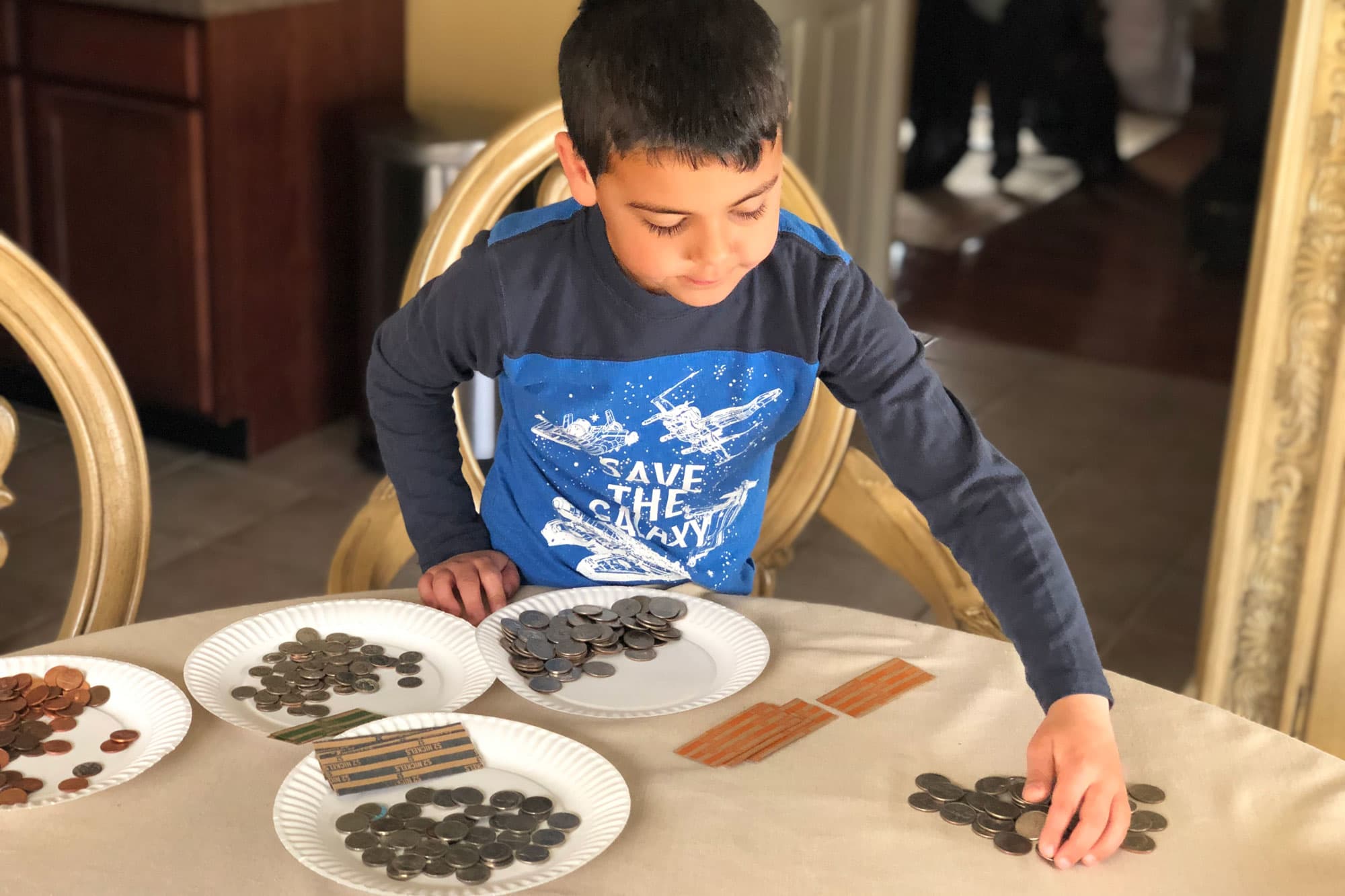Rolling coins is one way of teaching kids about money.
Michelle Fox | CNBC
With many schools shut down to protect against coronavirus exposure, many parents have found themselves in a new role: teacher.
So why not add some personal finance to your lesson plans?
“This is the most amazing opportunity for doing things with your kids that you wanted to do, that are meaningful long term,” said Thomas Henske, a certified financial planner with New York-based Lenox Advisors.
“People have never been in an environment where they are not rushing to go to the next thing,” he added.
At least 55.1 million students have been affected by school closures so far, according to Education Week. Parents are now guiding them through lessons provided by their teachers and tapping into online resources to help out.
Diana David Joseph understands the importance of weaving money lessons into her day. She once worked on Wall Street, but now lives in Cincinnati with her husband and four children.
She’s been playing games with coins for her kindergartner triplets and tapping into her third-grader’s inner entrepreneur.
Diana David Joseph and her family
She also spends her time running a Facebook group called Parent Vault, which she started just a few weeks ago as a community for parents now home-schooling. It has close to 20,000 members. She’s also since created a Parent Vault website.
“There is definitely a trend: We are doing a lot of academic stuff with our kids, but let’s go back to our roots — the things we are always wanting to do with our kids but don’t have the time,” Joseph said.
“Let’s teach our kids how to fix a car, how to garden,” she added. “Let’s teach our kids how to balance a checkbook.”
Here are ways you can incorporate financial lessons throughout the day for your kids, no matter their age.
Daytime
At around the age of 3 to 5 years old, kids may be too young for financial concepts but you can start building a foundation by having some basic money conversations.
Between 6 and 12, they can start absorbing more concrete information and build healthy habits. Teens and young adults can start earning money and making their own decisions.
You can check out age-appropriate resources on the Consumer Financial Protection Bureau’s Money as You Grow section, as well as the nonprofit Khan Academy, which provides free online courses.
You can also involve them in projects, like starting a business or building a small stock portfolio.
“Have kids start opening up their own investment accounts and think through what stocks you would buy,” Henske advised.
More from Invest in You:
Six messages to reassure kids when COVID-19 hits your family financially
What college grads need to know entering the job market post-coronavirus
Deepak Chopra: The coronavirus and the need for spiritual well-being
Or, you can simulate stock trading through the SIFMA Foundation’s stock market game. Joseph had her 8-year-old daughter Hannah play stock trading with the London Stock Exchange’s fantasy game.
She also worked with her on several business plans. Hannah started with slime and bracelets, but after some market research determined they weren’t likely to be profitable ventures, she eventually settled on an event-planning business.
“I’ve been completely impressed by her ability to think this through in a much deeper way than we would have if we didn’t have this shelter-in-place coronavirus situation,” Joseph said.
In normal times “we would have done one business plan and called it a day and gone to soccer practice,” she added.
For her 6-year-olds, she did a penny-stacking race. When the time was up, whoever had the largest stack won — and then they counted how many they had.
Then there are chores.
With kids around the house more, let them come up with ways they can earn some extra money. They can propose a job and then you can have a discussion about how much it is worth, suggested Tim Sheehan, CEO & co-founder of Greenlight, which provides debit cards and savings accounts for kids. Accounts for children on Greenlight have now hit a total of $25 million in savings.
“They start to connect that to: Money doesn’t grow on trees,” he said “You have to earn it. You do work.”
Then, have them purchase things they want with their own money.
“What you are really teaching them to do is live within their means,” Sheehan explained. “That is huge for when they are out on their own.”
During dinner
The learning doesn’t have to end once you sit down to dinner. Use the time to have age-appropriate conversations around money at the table.
Those can be about current events, said Henske, like how to help small businesses struggling right now and whether or not buying a gift card makes good financial sense.
Talking about what’s happening now also helps them understand the importance of trying to save for an emergency event.
Evening
If your kids are in middle school or high school, a movie night can turn into lessons about money, said Henske.
He has watched several films with his kids, “The Big Short,” which tells the story of the 2008 crisis, and “Wall Street” are two examples. “Trading Places,” “Moneyball,” “Dark Waters” and the “Pursuit of Happyness” are others on his list.
At the end of the day, it’s all about finding pockets of time to squeeze in some fun but informative exercises.
“A little financial literacy has some shelf space at a timely point in our history right now,” Henske said.
